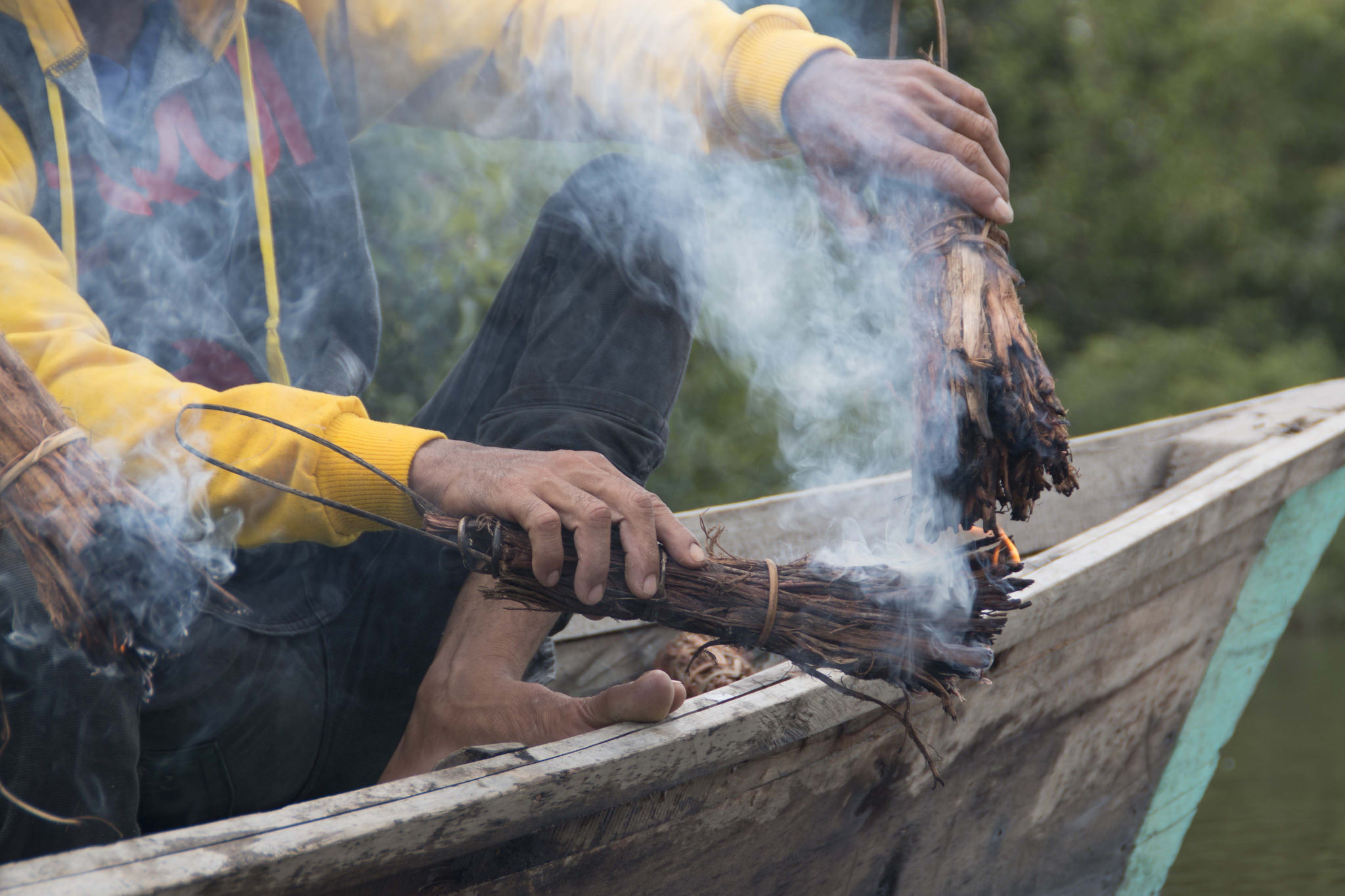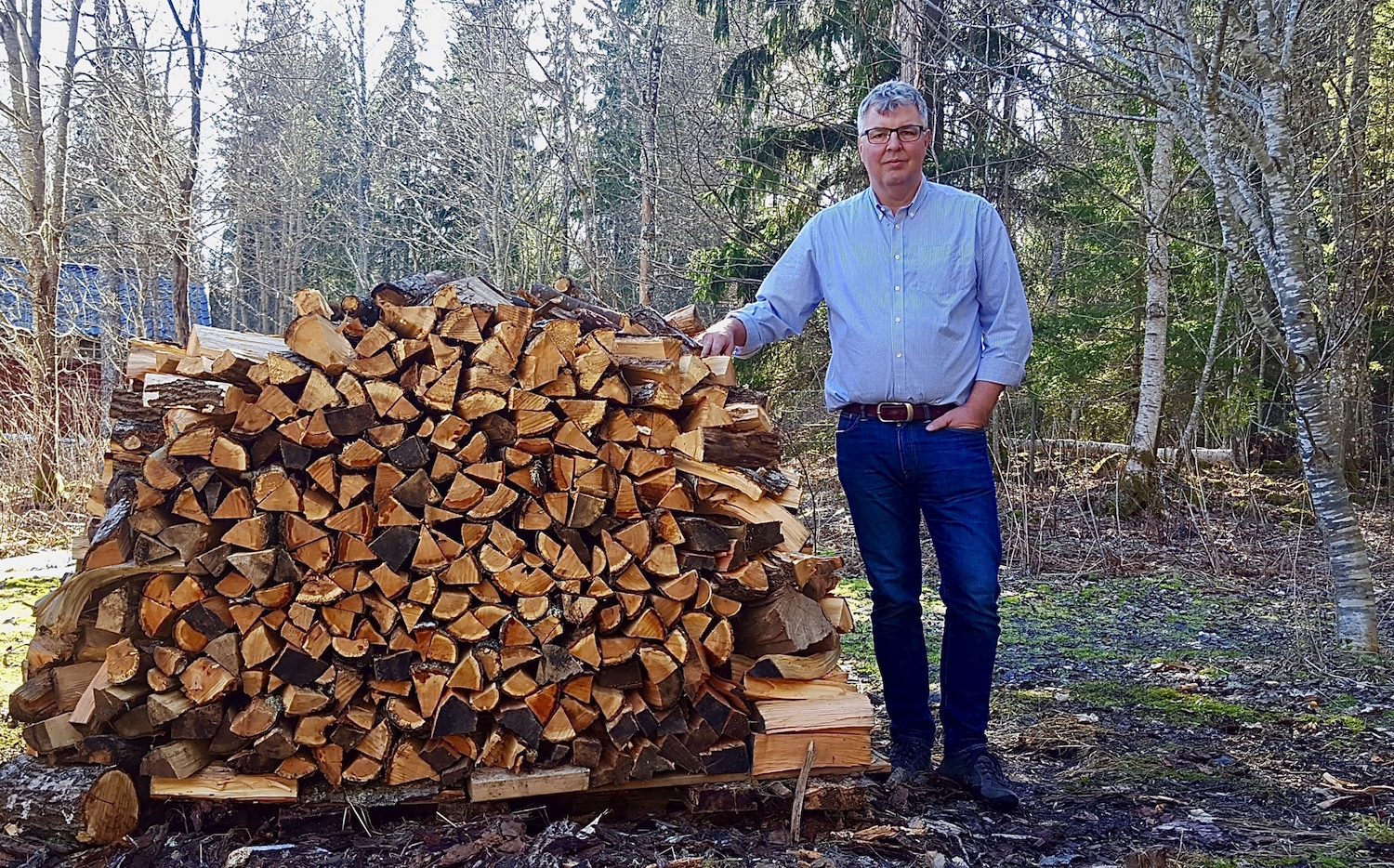What connects forests and energy? Forests News Editor Leona Liu put the question to Peter Holmgren, Director General of the Center for International Forestry Research (CIFOR), and Himlal Baral, a Scientist in CIFOR’s Forests and Environment Program in celebration of the United Nations International Day of Forests, marked on 21 March 2017.
Today we are marking the special occasion of the United Nations International Day of Forests. This year’s theme is ‘Forests and Energy’. Peter, why the linkage?
Peter Holmgren (PH): Well, it’s quite obvious to me, because if you look at energy — and bioenergy in particular — it’s very connected to forests. Out of bioenergy, a very large part of that is, of course, coming from wood biomass from forests, from trees, and also from other agriculture residues. Overall, almost 10% of the world’s energy mix comes from bioenergy in some form, and that makes forests and trees a very central part of our energy system.
And what is the state of bioenergy today? What are its current applications?
Himlal Baral (HB): Forest-based bioenergy is constantly evolving. It’s still a large percentage of the world’s population that is using wood for cooking and heating purposes, which is a major application. Apart from that, the forest is being utilized to convert electricity.
Peter, how does bioenergy fit into the global restoration agenda?
PH: Let me then first say that I don’t think we should talk about a global restoration agenda. Restoration is very much something that needs to happen locally. And of course, in the local restoration agenda, energy, as Himlal has already pointed out, many communities and households depend on bioenergy from forests and trees in their daily life. Therefore, making sure that the supplies of bioenergy from the landscapes that we are trying to restore are sustainable.
We need to ensure that sustainable bioenergy is available to the landscapes and the communities that depend on it. And then secondly, when we restore landscapes we try to manage them sustainably. And to do that, we need to recognize that bioenergy, forest bioenergy, is a byproduct of many other things that we produce in the landscape. That is, we shouldn’t see bioenergy as a monocrop or monoculture of trees that are to be delivered as energy. We should see bioenergy as one part of the mix of benefits that we get from the landscape.
We need to ensure that sustainable bioenergy is available to the landscapes and the communities that depend on it.
What is the research that CIFOR is currently doing on the bioenergy sector?
HB: We are looking at a wide range of issues associated with bioenergy, especially social, economic and environmental aspects of bioenergy production and development in various parts of the world. In sub-Saharan Africa we are looking mainly at fuelwood and charcoal value chains and associated impacts to the environment. And in Indonesia we are mapping bioenergy policies for wood-based energy development as well as oil palm-based bioenergy development. In addition, we are also exploring bioenergy — how can bioenergy be integrated as a part of landscape restoration goals, as Peter mentioned earlier.
Peter, are there any new developments in bioenergy that are interesting to follow at the moment?
PH: One thing we read a lot about these days is the possibility to make airline fuel out of biomass and wood biomass. This is of course a very interesting development, because a lot of the emissions that we have come from air transport. And if we could provide that fuel not from fossil sources but directly from the vegetation that could be a great way forward to reach our goals. At the same time, we need to be careful so that we don’t create another excuse for continuing to fly as much as we do, because it’s not only about offsetting our current emissions with something else, it’s actually about reducing overall emissions as well.
Forest-based bioenergy is constantly evolving.
But how can we enhance collaboration between the government, private sector, research and civil society to scale up bioenergy development in terms of a landscape approach?
PH: We can’t see energy issues in isolation. And particularly when we talk about bioenergy we’re talking about very integrated systems with the food sector, with the rural development issues, and also with climate change, as well as with forest management at large. So we need to find ways to work in an integrated fashion to deal with bioenergy. And a good platform for that is the Sustainable Development Goals. To address this need for an integrated approach to the Sustainable Development Goals, CIFOR has developed—together with many partners—the Global Landscapes Forum, where we have partners from different sectors and different interests coming together. And energy is clearly part of that mix.
It also connects to other sectors such as water, we should not only look at bioenergy as an energy in its own right from forests, we should also look at forests as watershed protection for hydroelectric dams, which is another function that indirectly connects forests with energy. And there are many other connections to make, and the key point is that we shouldn’t be afraid of the complexity that it means to integrate across sectors. We should embrace those possibilities.
Thank you very much, Peter. Thank you, Himlal. And thank you for watching us here at Forests News on the International Day of Forests.
We want you to share Forests News content, which is licensed under Creative Commons Attribution-NonCommercial-ShareAlike 4.0 International (CC BY-NC-SA 4.0). This means you are free to redistribute our material for non-commercial purposes. All we ask is that you give Forests News appropriate credit and link to the original Forests News content, indicate if changes were made, and distribute your contributions under the same Creative Commons license. You must notify Forests News if you repost, reprint or reuse our materials by contacting forestsnews@cifor-icraf.org.

